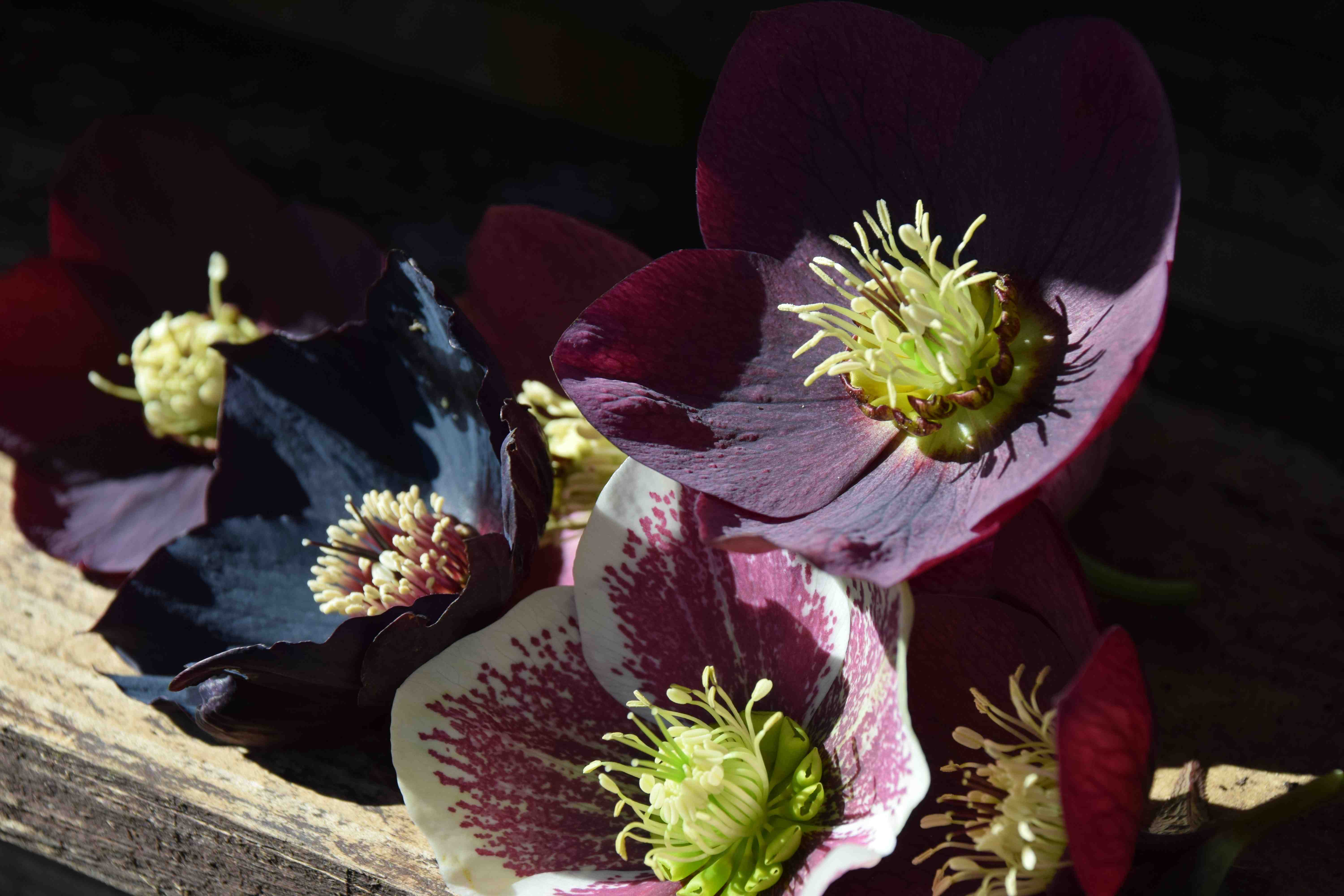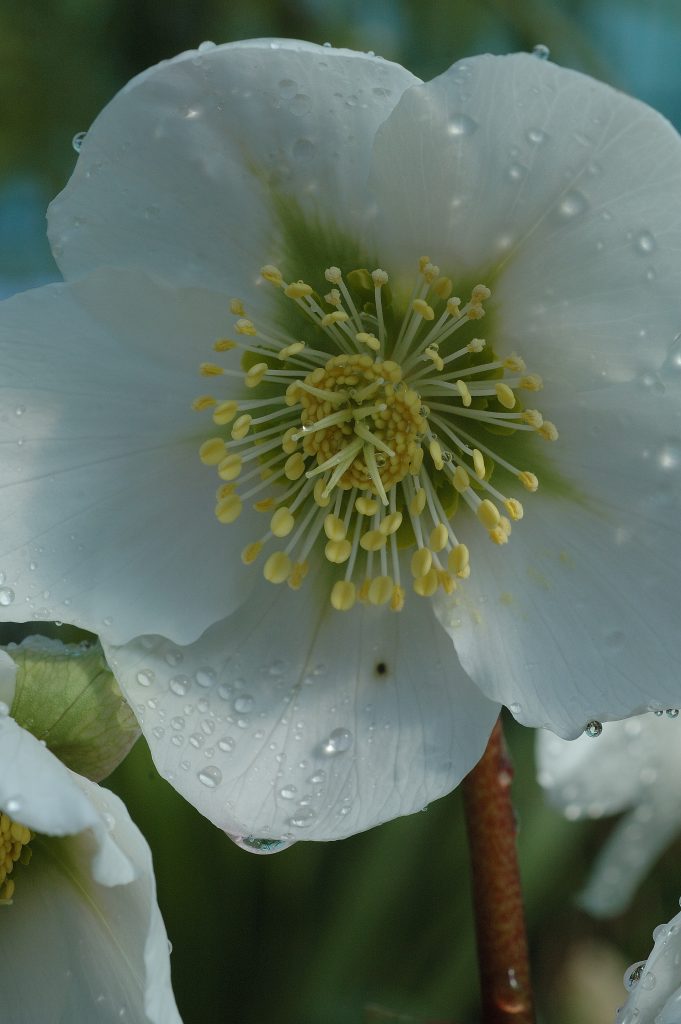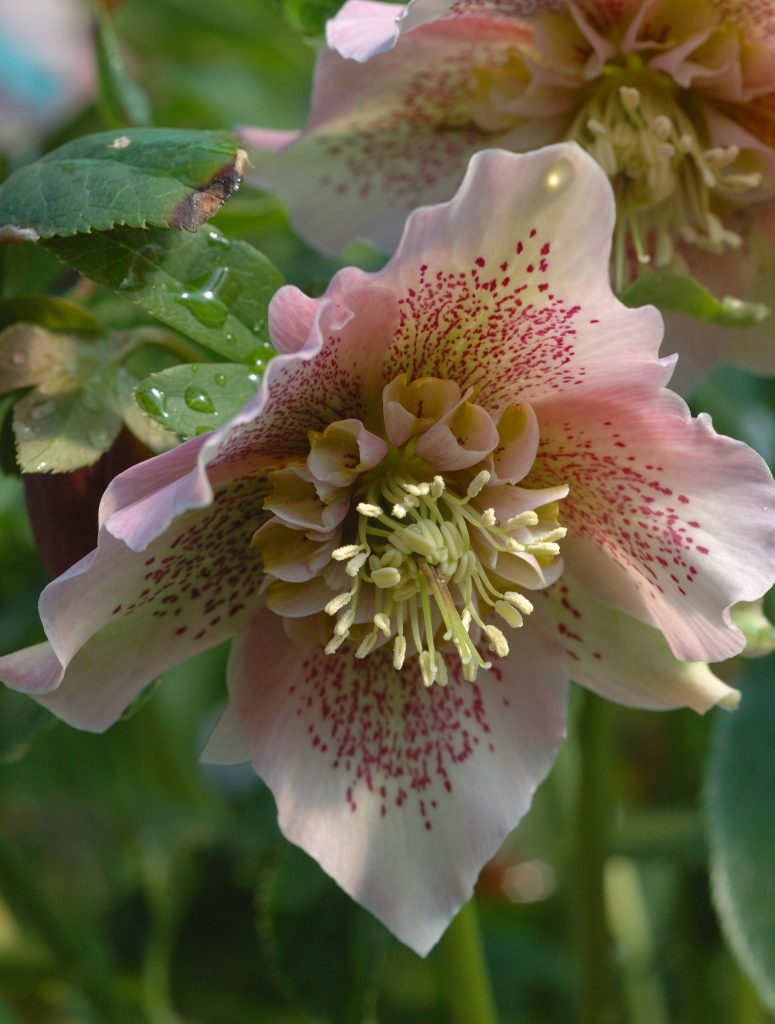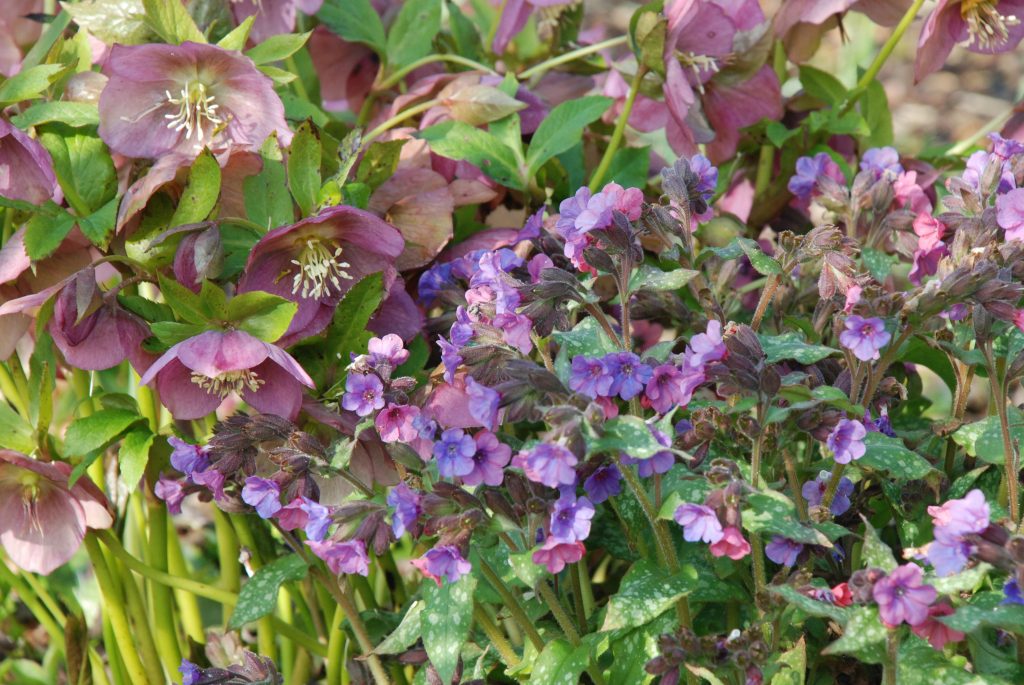
What would your desert island plants be? What plants could you not do without in your garden? It is a tricky question to answer and I would hate to not have roses in the summer, or daffodils in spring. But I think that the plants I would miss most are my hellebores. I have grown hellebores for many decades, long before they became the popular plants they are now. When I first grew them they were considered rather odd and the good named forms were very expensive – the rest being rather dull seedlings.
Few flowers have gone through the rapid development enjoyed by hellebores in the past decade or so. This is partly through the hybridising of different hellebore species which has resulted in hybrids that have superior flowers and foliage and are sterile and have to be propagated by tissue culture. These can be pricy but they are great garden plants. Among the rest, good strains of Helleborus x hybridus such as the ‘Ellen’ colours are find garden plants. These are commonly called Lenten roses, because of their spring flowers but the true Christmas rose (Helleborus niger) is in flower now. You can buy plants in flower and they are lovely to have indoors over Christmas, but put them in the garden in the New Year.

Most hellebores are easy to grow. The Christmas rose can be a bit picky but the other hybrids are generally easy to please. They will grow in sun or shade and a semi-shaded spot is perfect. They are evergreen although the old leaves should be cut off in early winter to reduce any disease affecting the new foliage and to show off the flowers better. They are not fussy about soil either but dislike waterlogged soils. Once established they do not need a lot of attention and will withstand some drought. Mulching with some gapped compost in spring will help to keep them healthy and vigorous.

With a bit of luck, and if you do not remove the old flowers in spring, they will seed around and you can find the shiny, dark green seedlings around the mature plants in spring. These can be transplanted and will usually bloom in their second or third spring.
The colour range is enormous, from green and white, through pink and purple to almost black as well as yellow. Flowers can be spotted or plain and double, single or anemone-centred (above). All are lovely and all make wonderful gifts at this time of year. Most people have a shady spot that would suit a hellebore perfectly and the plants are long-lived and tough. Every year I add a few more to my collection. The trouble when buying them is to know which ones to leave behind.

And few plants have a longer flowering period. My plants in the garden have been blooming for a few months already, which is rather unusual, and they overlap with other spring flowers, helping to blend winter into spring. Anything that helps make winter a bit shorter and more colourful has to be worth growing.